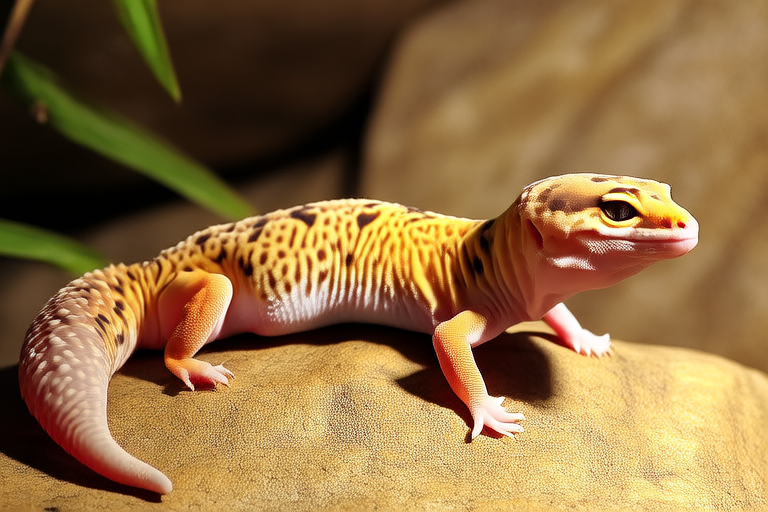The Ultimate Beginner’s Guide to Keeping Your Leopard Gecko Happy and Healthy
Welcome to the wonderful world of leopard geckos! These charming, docile creatures have become increasingly popular among reptile enthusiasts and first-time pet owners alike. Known for their easy care and engaging personalities, leopard geckos offer a unique opportunity to experience the joy of pet ownership without the complexities often associated with more challenging pets.
Why Leopard Geckos Make Great Pets for Beginners
Leopard geckos are relatively low-maintenance pets that thrive in captivity. They are nocturnal, meaning they are most active at night, which can be perfect for those who work during the day. Additionally, they do not require frequent handling, making them ideal for individuals who may not have extensive experience with animals. Their calm demeanor and ease of care make them a fantastic choice for novice reptile owners.
Essential Housing Requirements
Tank Size
For a single adult leopard gecko, a 20-gallon tank is sufficient. However, if you plan to house multiple geckos or want to provide extra space for exercise, a larger enclosure is recommended. The tank should be long enough to allow your gecko to move around comfortably, but height is less critical since these lizards are primarily ground-dwelling.
Substrate Options
Selecting the right substrate is crucial for your gecko’s health. Avoid loose substrates like sand, as they pose a risk of impaction. Instead, opt for paper towels, reptile carpet, or eco-friendly bedding designed specifically for reptiles. These options are safer and easier to clean.
Temperature Gradients
Maintaining the correct temperature gradient within the tank is vital for your gecko’s well-being. Install a heat lamp on one side of the tank to create a warm spot between 88°F and 92°F (31°C to 33°C). The cooler side should remain around 75°F to 80°F (24°C to 27°C) to allow your gecko to regulate its body temperature effectively.
Lighting Needs
While leopard geckos are nocturnal, providing UVB lighting can support their overall health. Use a low-wattage UVB bulb placed above the tank for 10-12 hours daily. This simulates natural daylight and helps in calcium absorption, crucial for bone health.
Diet Specifics, Feeding Schedules, and Nutritional Supplements
Leopard geckos are insectivores, primarily eating crickets, mealworms, and waxworms. Offer a variety of insects to ensure a balanced diet. Feed your gecko 2-3 times a week, depending on its age and size. Juveniles need more frequent feedings compared to adults.
Insects should be gut-loaded before feeding; this means feeding the insects a nutritious diet rich in vitamins and minerals. Additionally, dust the insects with a calcium supplement twice a week and a multivitamin once a week to prevent deficiencies.
Handling Techniques
Leopard geckos are generally docile and can be handled gently. Always wash your hands before and after handling to avoid transferring oils or bacteria. Support your gecko’s entire body when holding it, avoiding sudden movements that could startle it. Allow your gecko to get used to handling gradually to build trust.
Common Health Issues, Signs of Illness, and Maintaining Hygiene
Like any pet, leopard geckos can suffer from various health issues. Common problems include metabolic bone disease, respiratory infections, and parasites. Watch for signs such as lethargy, loss of appetite, difficulty breathing, or abnormal behavior. Regular vet check-ups are essential for early detection and treatment.
To maintain hygiene, clean the tank weekly, removing waste and replacing soiled substrate. Disinfect the tank periodically with a reptile-safe cleaner. Clean water dishes daily to prevent bacterial growth. Proper hygiene helps prevent illnesses and keeps your gecko healthy.
Choosing the Right Veterinarian and Understanding Pet Ownership
Find a veterinarian experienced in reptile care. Regular check-ups help monitor your gecko’s health and catch potential issues early. Understand that owning a pet involves a significant commitment. Leopard geckos can live up to 20 years, requiring consistent care and attention throughout their lives.
Resources for Further Learning
Explore books, online forums, and local reptile clubs to deepen your knowledge about leopard gecko care. Engaging with other owners and experts can provide valuable insights and support. Websites like Reptifiles and forums on Reddit offer comprehensive guides and community discussions.
By following this guide, you will be well-equipped to provide your leopard gecko with a happy and healthy life. Remember, every gecko is unique, so observe your pet closely and adjust care accordingly. Enjoy your journey into the fascinating world of reptile keeping!
